

When do baby birds leave the nest depends on the species of the bird. For most birds, however, the young typically leave the nest somewhere between 12 and 21 days old. During the time in the nest, their parents take care of them, bringing them food and protecting them from predators. Even after they leave the nest, most species of birds will continue to care for their young for several more days.
In this article, you will find detailed information about 9 common bird species and the timeframe for when their babies leave the nest. This information will give you a better understanding of birds and their nesting characteristics.
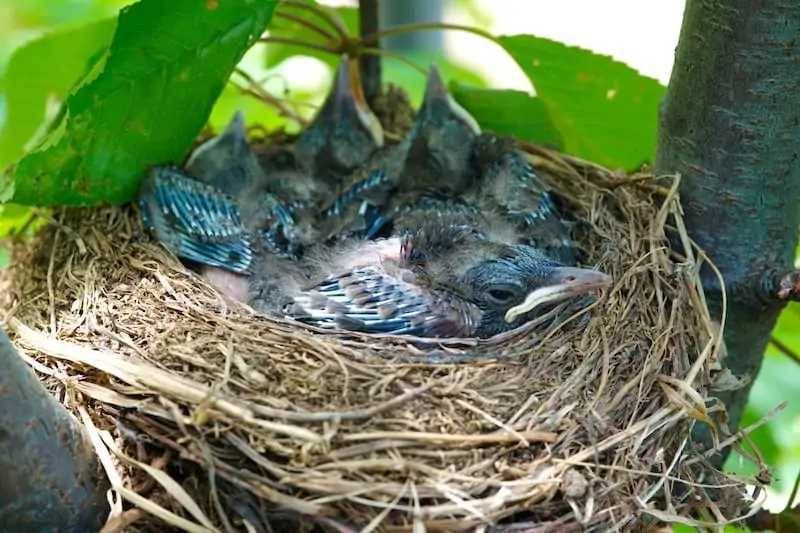
Blue Jays are large songbirds that have bright blue, white, and black plumage. They are also well-known for being noisy birds with loud calls. Both the male and female will sit on the eggs, which take about 16 to 18 days to incubate. The leave the nest between 17 and 21 days after emerging from their egg.
Blue Jays are known to steal and eat the nestlings and eggs of other birds. While most of their diet consists of nuts and insects, during a study of Blue Jays and their feeding habits, it was found that 1-percent of the Blue Jays had eggs or birds in their stomach.

The is a songbird with a long tail and thick bill. The males of the species have brilliant red feathers with black trim around their bill, while the females have light brown feathers with a reddish tinge.
The female Northern Cardinal does most of the nesting building, though the male will sometimes bring nesting material. It can take up to 9 days to build the nest, which they typically only use once. They usually lay between 2 to 5 eggs and will incubate these eggs for up to 13 days.

The male adult Eastern Bluebird has bright blue plumage, and a rusty-colored chest and throat. The female has gray plumage with a blue-tinged tail and wings, and a brownish orange breast.
The Eastern Bluebird commonly nests in old woodpecker holes, with the female of the species taking on all the nest building responsibilities. The female will lay between 2 to 7 days per nesting, and will incubate the eggs for 11 to 19 days.
A fun fact about Eastern Bluebirds is that they typically don’t visit backyard feeders as regularly as other birds, unless the feeders are filled with .

The is a common sight throughout the United States, often seen hopping through yards grabbing insects along the way. American Robins lay between 3 to 7 eggs per nesting, and the eggs are colored in that iconic blue known as “robin egg blue.” The female incubates the eggs for 12 to 14 days, but both the male and female will feed the babies after hatching.
The babies will leave the nest between 14 and 16 days after hatching. The male American Robin tends to the young birds after they have left the nest, while the female gets busy attempting to next a second time.
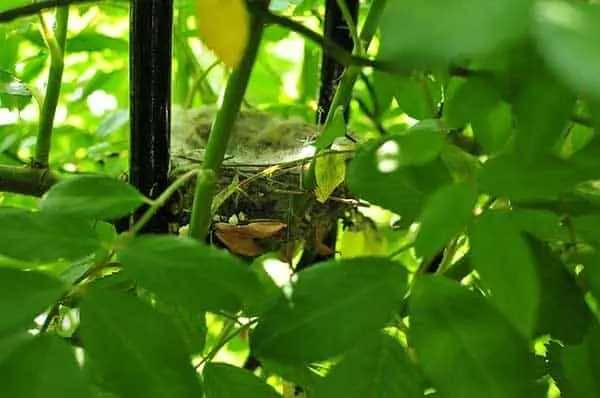
The is the state bird of Washington, New Jersey, and Iowa. This cheerful looking bird has bright yellow plumage with black and white trim. Unlike other goldfinches, the American goldfinch molts its body feathers once in winter and then again in the summer.
While both the male and female American goldfinch pick out the perfect site to nest, the female is the one who does the nest building.
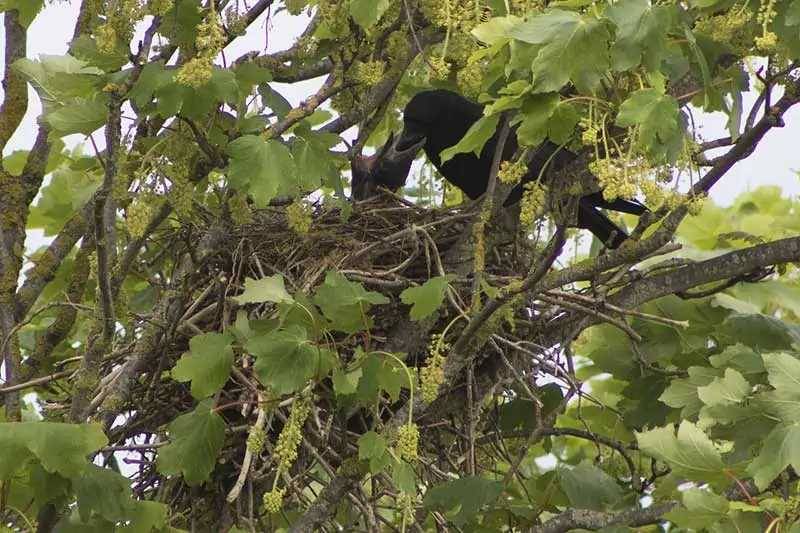
Crows are large, intelligent birds with all black feathers. Both the male and female crow will build the nest, which is made up of twigs, weeds, pine needles, and animal hair. The female will lay between 3 and 9 eggs and will incubate the eggs for up to 18 days. Once hatched, the baby crows will stay in the nest for 30 to 40 days.
An interesting fact about crows is that the young birds don’t breed until they are 2 years old, at the very least. In fact, most won’t breed until they reach at least 4 years old. It is common for young crows to help their parents raise baby crows for a few years.

Despite sharing the same name, house sparrows are not related to the other North American sparrows. These sparrows are built chunkier with a round head, short tail, and full chest. Their feathers are various hues of gray, white, black, and brown.
The female lays 1 to 8 eggs up to 4 times a year. They incubate the eggs for 10 to 14 days. Once hatched, the baby house sparrows will leave the nest within 15 to 17 days. It is not uncommon for the house sparrow to take over the nests that other birds have abandoned.
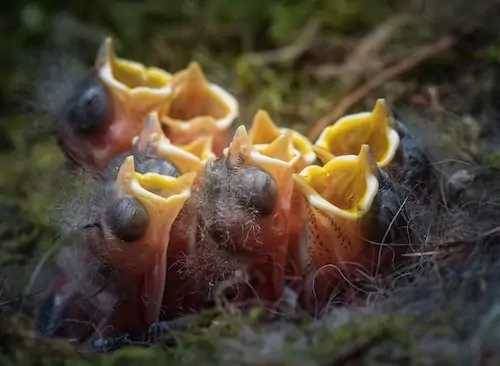
Chickadees are small birds with a spherical-shaped body and feathers in various shades of white, gray, and black. The female of the species typically chooses the nesting site, but both the male and the female will excavate the cavity.
The black-capped chickadee only has one brood a year. The eggs incubate for up to 13 days, and will remain in the nest for between 12 to 16 days after hatching. At first, the female typically remains with the babies while the male chickadee brings food. As the babies get older, however, both the male and the female will leave to search for food.
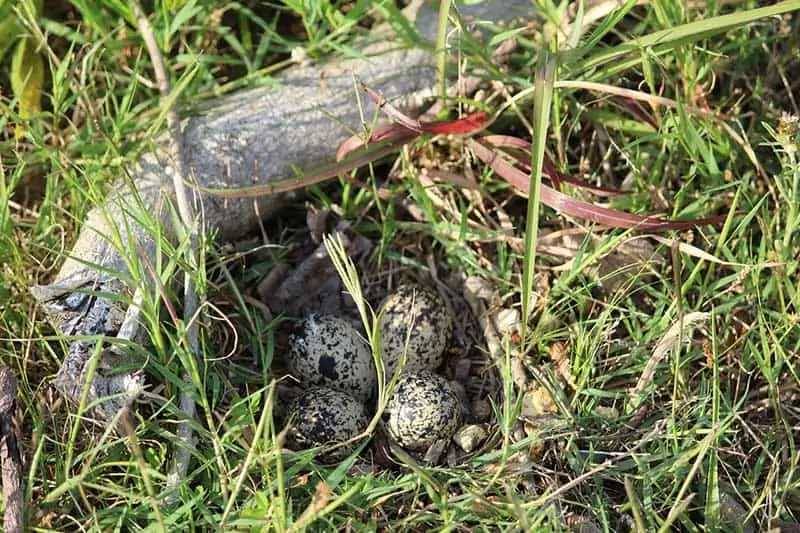
Killdeer are that will lay 4 to 6 eggs up to 3 times per year.
A fun fact about these interesting birds is that to distract predators from their young, the adult killdeer will act as though it has a broken wing, twisting one wing against its back and dragging itself.
As you can see, when do baby birds leave the nest depends on the species. Although for most birds it is between 12 and 21 days. Some birds will leave their nest within 24 hours after hatching, while others stay for several weeks. This just goes to show you that each species of bird has its own specific characteristics that make it unique.
